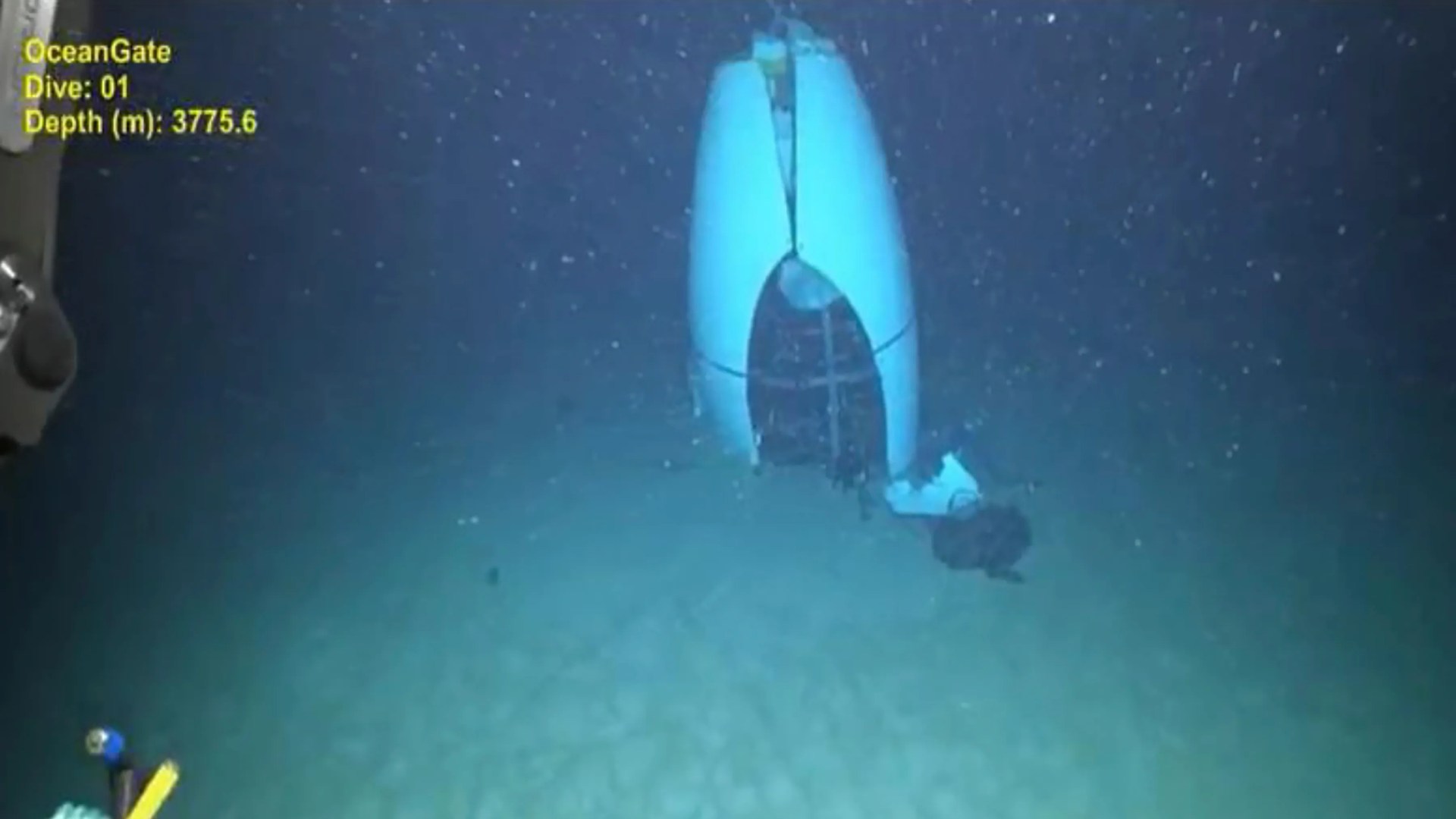THE doomed Titan sub crashed during a malfunction just days before it set off on a fatal dive that killed five, an ex-OceanGate chief has admitted.
Former scientific director Dr Steven Ross is testifying as part of an investigation into the “catastrophic implosion” of the Titan submersible last June.
4

4

4
Dr Ross told officials today that days before the sub set off for the doomed Titanic trip, passengers onboard were thrown about during a malfunction.
The submersible pilot at the time, OceanGate co-founder Stockton Rush, crashed into bulkheading, Dr Ross said.
One passenger was even left hanging upside down and the other two managed to wedge themselves into the bow end cap, he added.
Dr Ross said that he did not know if an assessment of the Titan hull was performed after the incident.
Businessman Rush – who died in the sub tragedy – was reportedly warned about safety concerns ahead of the trip on June 18 last year.
A two-week-long hearing is ongoing into the tragedy in Charlestown, South Carolina, under a US Coast Guard panel.
All five on board – including Brit billionaire Hamish Harding, 58, French Titanic expert Paul-Henri Nargeolet, 77, British-Pakistani businessman Shahzada Dawood, 48, and his 19-year-old son Suleman – died during the expedition.
Today chilling new video of the doomed vessel was released, showing pieces of the Titan strewn across the ocean floor.
The harrowing footage of the remains shows “the aft dome, aft ring, remnants of the hull and carbon fibre debris”, the US Coast Guard said during proceedings today.
Dr Ross’ testimony follows damning revelations by OceanGate’s former operations boss David Lochridge earlier this week.
He said that the viewport and elements of the dome ceilings deviated from standard design processes.
Lochridge said he was “appalled” by the O-ring – a type of seal.
He said: “There was so many laminations, so many voids. The imperfections were incredible.
“There was glue runs everywhere. And that’s a red flag.”
He described the hull as “porous paper. It was disgusting”.
Rob McCallum, who has led seven dives to the Titanic, previously told The Sun the tragedy was “unavoidable” as OceanGate had been repeatedly warned their 22ft sub was not safe.
Titan was never certified or classed, and McCallum implored Rush to let an independent agency test his vessel.
McCallum said the businessman refused to listen, however, and simply brushed aside warnings.
He told The Sun: “I run an expedition company that had delivered over 1,500 expeditions – we are not cavalier, we manage risk as far as we can.
“So when OceanGate say things like exploration involves risk, yes it does, but that doesn’t give you carte blanche to ignore obvious danger.”
Rush accused those trying to raise safety concerns of trying to stop innovation.
The engineer, who co-founded OceanGate in 2009, created Titan with an experimental design made up of a carbon-fibre pod with titanium rings bolted on.

4

How the Titan tragedy unfolded
IN JUNE 2023, five men plunged beneath the surface of the North Atlantic in a homemade sub in the hopes of exploring the Titanic wreckage.
But what was supposed to be a short trip spiralled into days of agony as the doomed Titan vanished without a trace on June 18, 2023.
The daring mission had been months in the making – and almost didn’t happen at the hands of harsh weather conditions in Newfoundland, Canada.
In a now chilling Facebook post, passenger Hamish Harding wrote: “Due to the worst winter in Newfoundland in 40 years, this mission is likely to be the first and only manned mission to the Titanic in 2023.
“A weather window has just opened up and we are going to attempt a dive tomorrow.”
It would be his final Facebook post.
The following morning, he and four others – led by Stockton Rush – began the 12,5000ft descent towards the bottom of the Atlantic.
But as it made its way down into the depths, the vessel lost all contact with its mother ship of the surface, the Polar Prince.
It sparked a frantic four day search for signs of life, with the hunt gripping the entire world.
There was hope that by some miracle, the crew was alive and desperately waiting to be saved.
But that sparked fears rescue teams were in a race against time as the sub only had a 96-hour oxygen supply when they set out, which would be quickly dwindling.
Then, when audio of banging sounds were detected under the water, it inspired hope that the victims were trapped and signalling to be rescued.
It heartbreakingly turned out that the banging noises were likely either ocean noises or from other search ships, the US Navy determined.
Countries around the world deployed their resources to aid the search, and within days the Odysseus remote-operated vehicle (ROV) was sent down to where the ghostly wreck of the Titanic sits.
The plan was for the ROV to hook onto the sub and bring it up 10,000ft, where it would meet another ROV before heading to the surface.
But any hopes of a phenomenal rescue were dashed when Odysseus came across a piece of debris from the sub around 1,600ft from the Titanic.
The rescue mission tragically then became a salvage task, and the heartbroken families of those on board were told the devastating news.
It was confirmed by the US Coast Guard that the sub has suffered a “catastrophic implosion”.
An investigation into the disaster is ongoing.
OceanGate has suspended all its operations.




